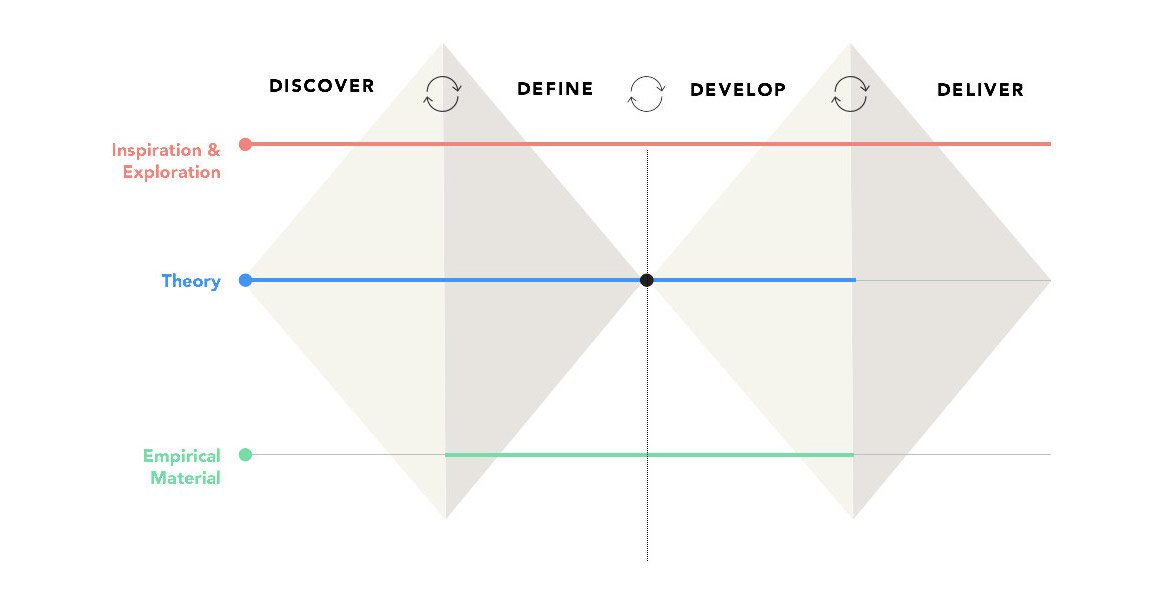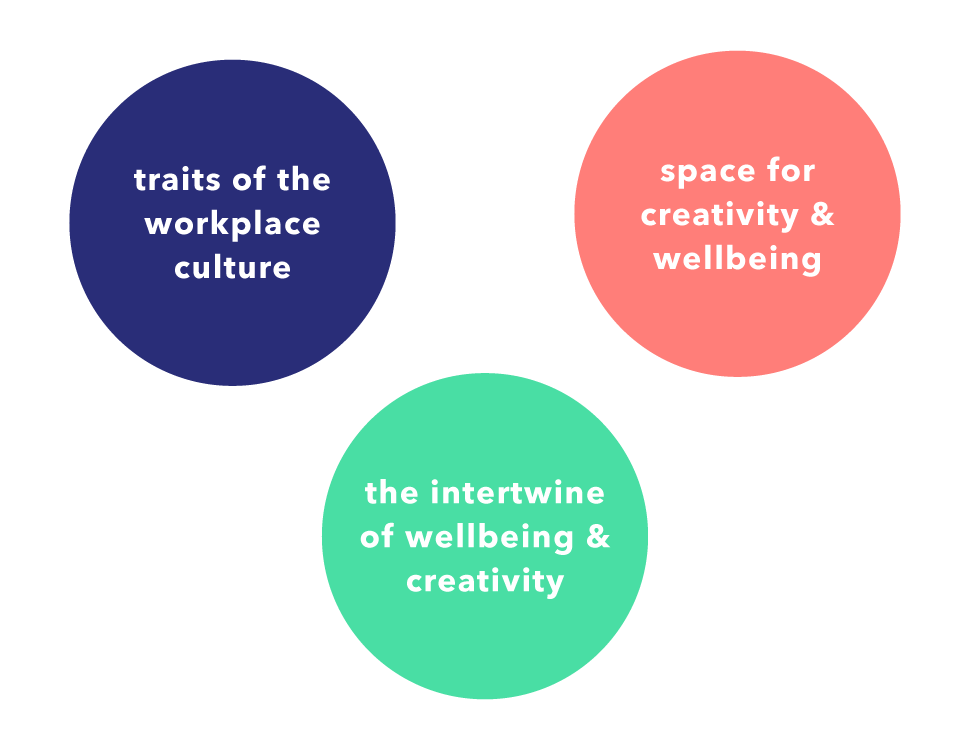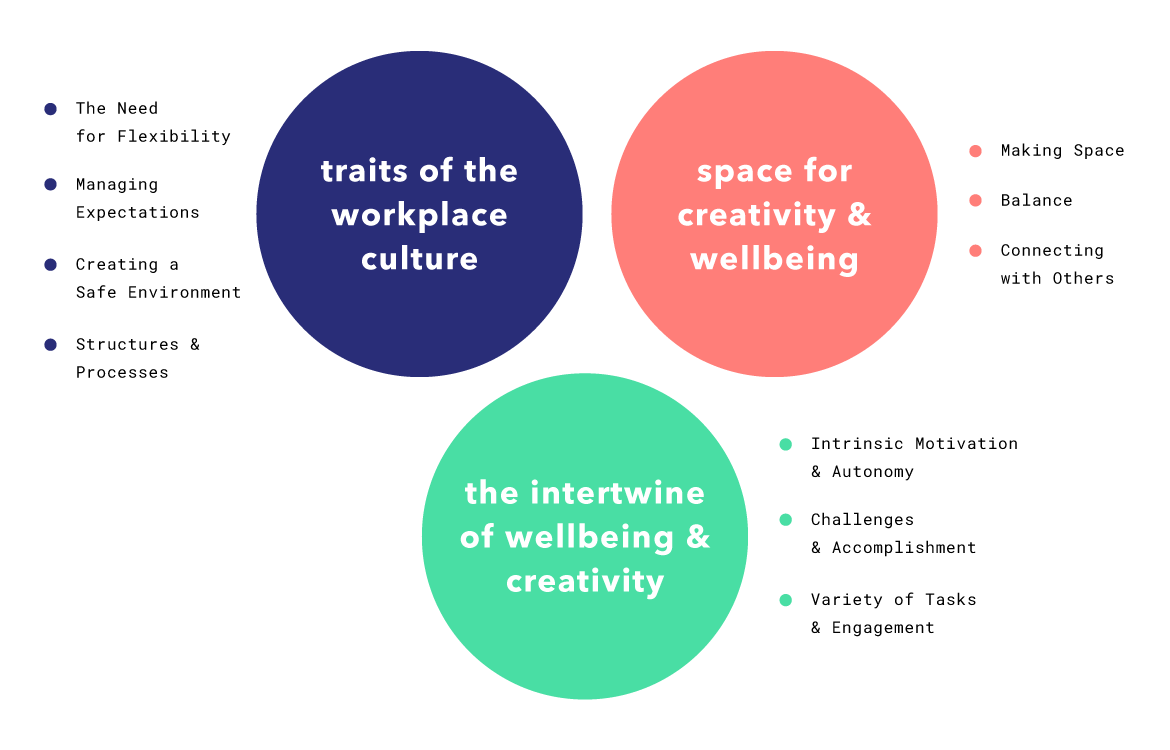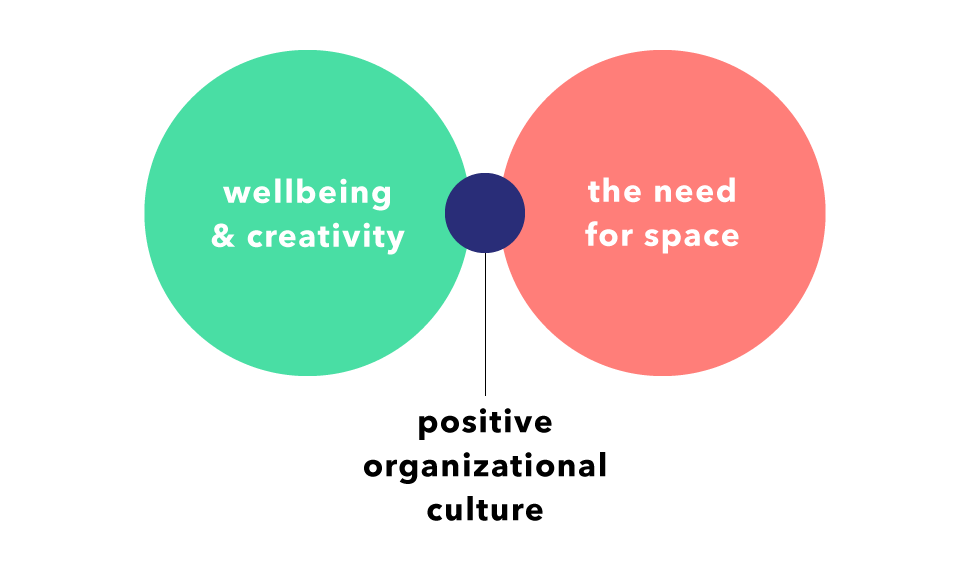Creative practitioners’ experiences of work life
ROLE
Design research
Master Thesis project
Business and Design (MSc) University of Gothenburg, Sweden.
Academy of Design & Crafts (HDK) and School of Business, Economics & Law.
year
2017
The purpose of the research was to explore how creative practitioners experience wellbeing and creativity in their work-life at creative agencies.
The thesis was done in collaboration with Julia Märak Leffler. We researched wellbeing and creativity theories, spoke to creatives in different types of agencies.
Our main findings were that culture plays an essential role in enabling creativity and wellbeing to flourish in creative practitioners; and that community is a driving force in nurturing them as well.
Research questions
What do creative practitioners do to support wellbeing and creativity in their work-life?
What experiences do creative practitioners have of creativity and wellbeing in their work-life?
The theory behind
We referred to theories on wellbeing, creativity and organizational culture, as well as previous research combining creativity and wellbeing.

Methodology & process
- Qualitative study focused on the experience and personal stories of 10 creative practitioners working at Agencies in the fields of Design, Strategy and Communication in Gothenburg, Sweden.
- Abductive approach: theory and empirical findings interplayed along the way, instead of departing with a pre-set theory to explain our findings.
- Exploratory research with constant reflection, inspiration and a human-centric approach which influenced our ways of working during the research.
- Primary Data Method: semi-structured interviews.
Research Process
Our process was semi-structured and iterative, going hand in hand with our exploratory and abductive approach. A good way to describe and visualize our process was using the double-diamond model, commonly used in design research and design projects.

Analysis
Connecting the dots between theory & data
We nested the data obtained from the interviews into four main initial themes: Wellbeing, Creativity, Workplace Culture, and Stress at work. With help from our theories from wellbeing, creativity, and organizational culture, we drew interesting relationships with our data. These resulted in three main themes:
- Traits of the workplace culture
- Space for creativity and wellbeing
- The intertwine of wellbeing and creativity

←
The three main themes of our analysis.
findings
The intertwine of creativity & wellbeing
Our study showed that though the creatives mostly enjoyed their work, expectations, demands and little time to shift between work tasks were expressed as problematic. Setting boundaries were not only an organizational problem but also an individual. Intrinsic motivation showed to be essential for creatives to feel engaged at work.
Creativity and wellbeing intertwined in our study and supported each other when the creatives shared what they did to keep creative and/or feel well; like engaging in creative activities such as illustration or writing.

Conclusion
Space for creativity & wellbeing
An interesting finding was that half of the participants were driving forces behind creative communities. Parts of what they did happen during the workdays, enabled by the culture at work, while other things were done during their free time.
We also found that workplace culture played an essential role in enabling creativity and wellbeing to flourish in creative practitioners. The main conclusion was that there needs to be more space for creativity and thus wellbeing at work, as this is beneficial both for the creative and thereby the organization.

Workplace culture played an essential role in supporting creativity and wellbeing to flourish in creative practitioners.

Let’s work together
I’m open to collaborations with fun & friendly people. If you’re looking for someone to partner with for branding, design or illustration projects, contact me.